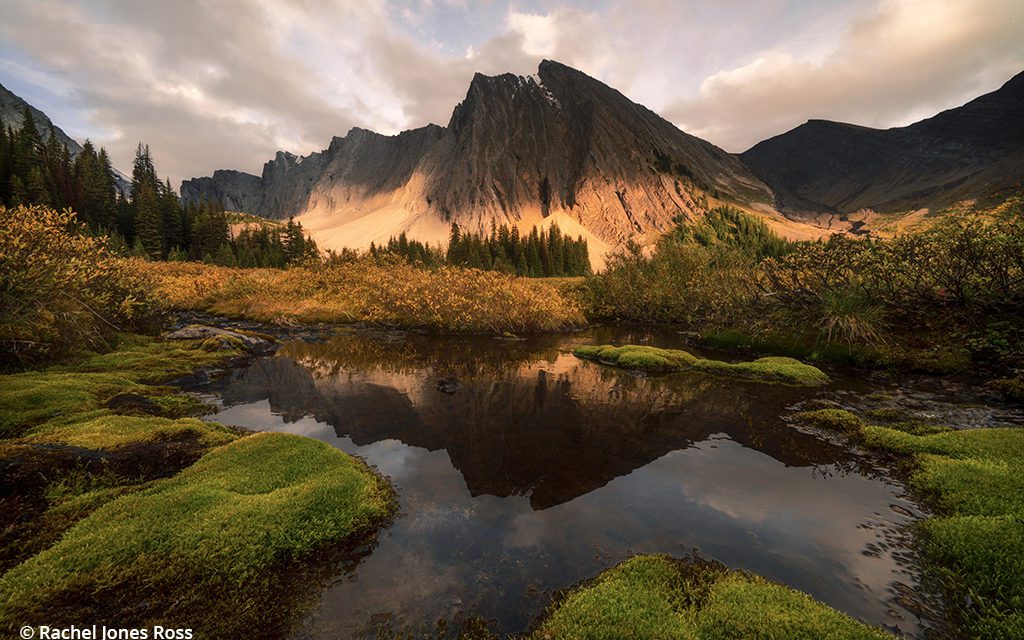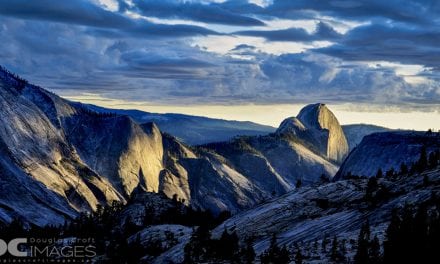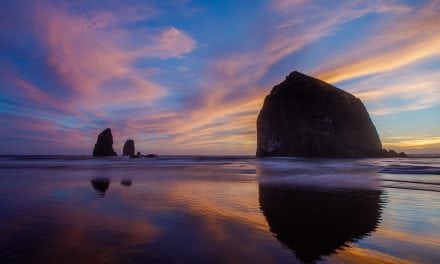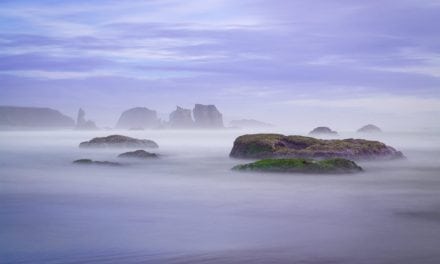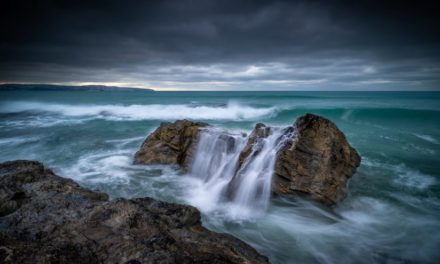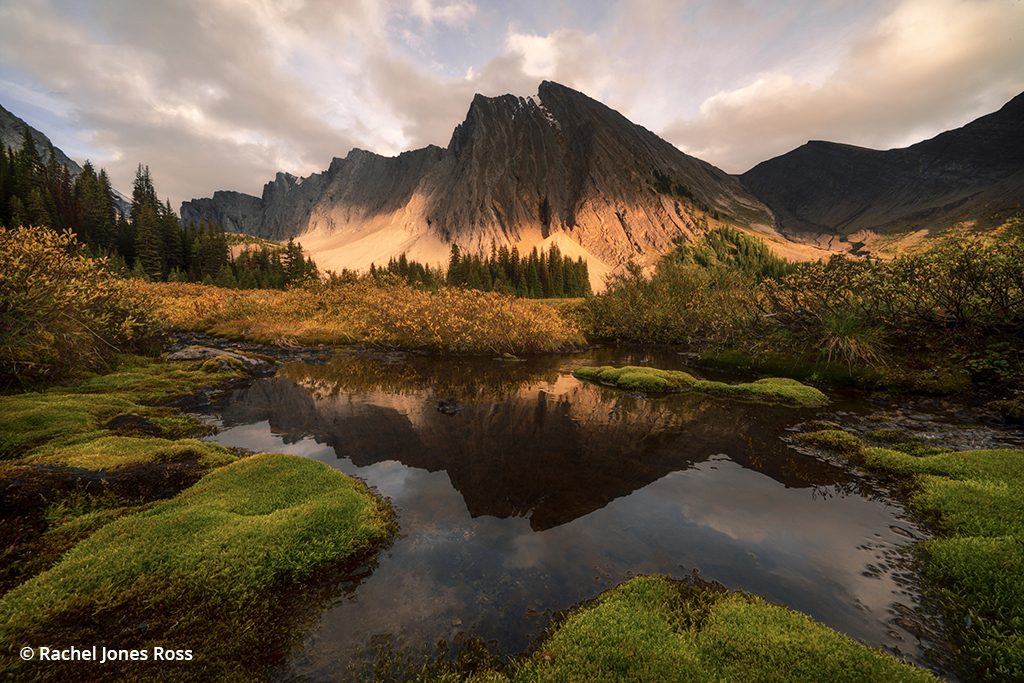
Autumn in the Canadian Rockies is brief but dramatic; the leaves change seemingly overnight.
When you live in the Canadian Rockies, where autumn is best measured in days not weeks, chasing fall colors can be a challenge.
Driving through Canmore with an eager group of photographers last year on day one of a seven-day autumn workshop, I noticed the green poplar leaves were beginning to turn bright yellow. A week later, we made our way back to the airport, passing through Canmore once again. By then, most of the poplar leaves had already fallen. Those seven days marked the beginning, peak and conclusion to our fall colors.
What makes the Canadian Rockies autumn spectacular, though, is the atmospheric drama the suddenly cooling air creates when moving across the still-warm earth.
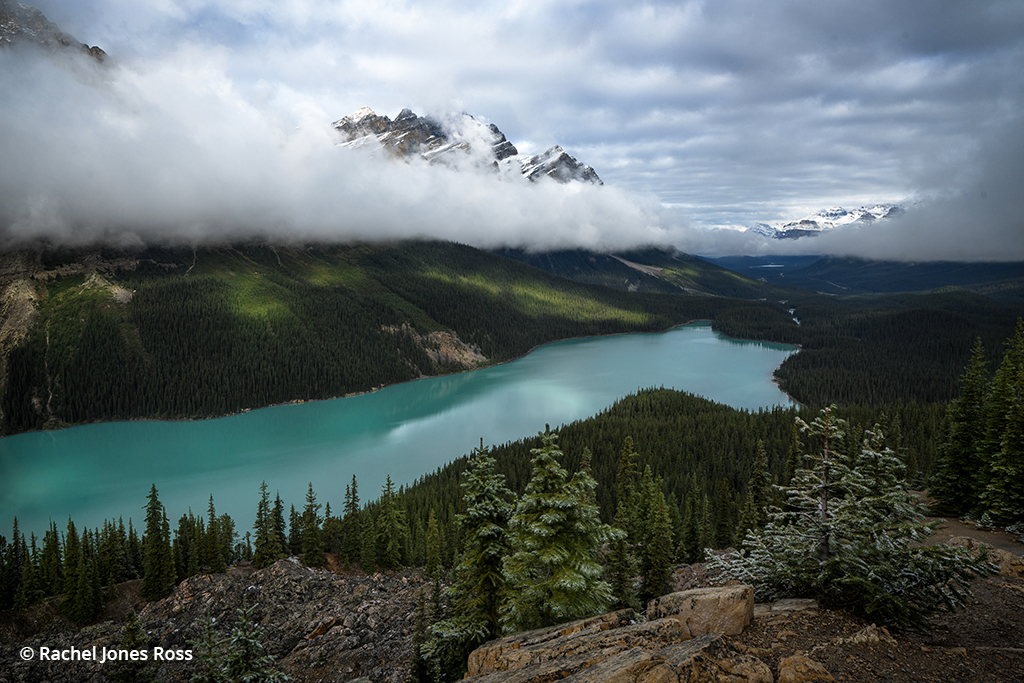
September snow is not uncommon in the Rocky Mountains. The light dusting of snow on the evergreens complements the turquoise green water and low, rolling clouds.
Autumn marks the shift from the longer days of summer to the longer nights of winter. Typically when we think of autumn, we think first about vibrant fall colors. Nevertheless, it is not just the leaves that change. Animal behavior, temperature and weather patterns are all changing, too.
Consider how the changing of the seasons provides opportunities for unique atmospheric landscapes—even if you are not lucky enough to be in an area with bold fall colors.
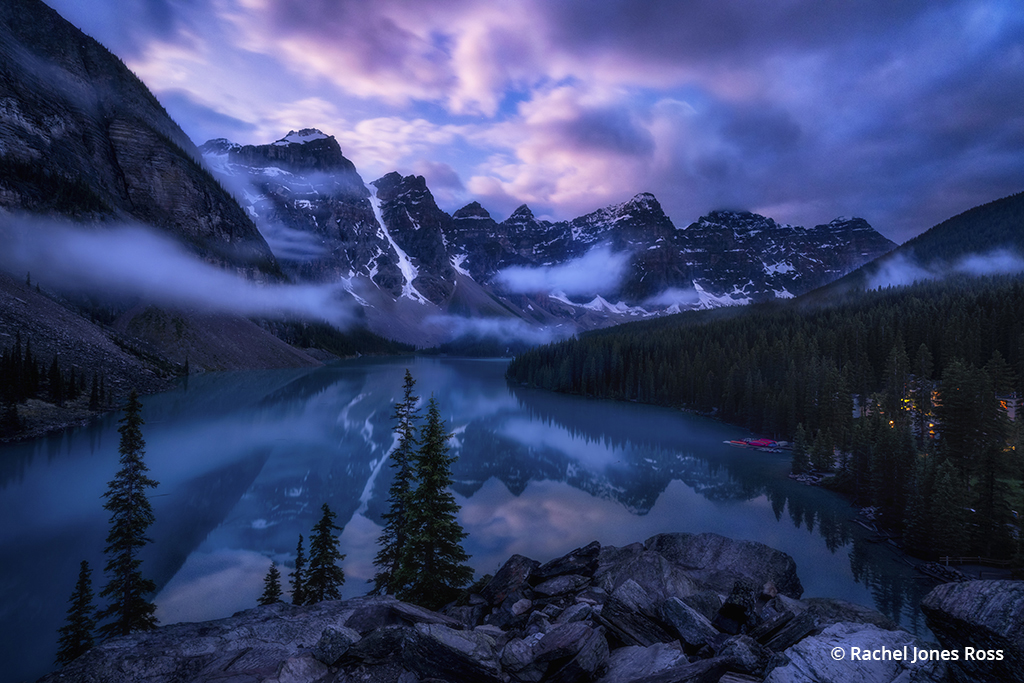
Moraine Lake in the moonlight. The longer nights of autumn and abruptly cooling temperatures create unique conditions, even at the most iconic locations.
First, moody, atmospheric conditions can transform even the most iconic locations into unique scenes that capture the viewer’s imagination. My image of Moraine Lake in the moonlight beautifully exemplifies that transition for me. That evening, I set out to shoot the sunset. As is often the case in the Rockies, the clouds did not cooperate. But, shortly after sunset, low clouds started to drift through the valley. With moonrise not far off, I waited and watched this iconic landscape transform into an ethereal dreamscape.
The cool air moving over the (relatively) warmer water created the perfect conditions for low, lazy clouds drifting through the valley. The higher clouds rolled in during twilight, and as the first stars came out, the rising moon underlit the incoming clouds. The only thing this image is missing is some yellow larch trees, which only grow at higher elevations, and maybe a grizzly bear filling his belly before a long winter’s nap. Through the years, I have photographed Moraine Lake in every season. Despite the lack of bold fall colors, this is my favorite image of all my photos from last year. The combination of low, drifting clouds, and the lake bathed in moonlight makes it a unique perspective of an often-photographed iconic location.
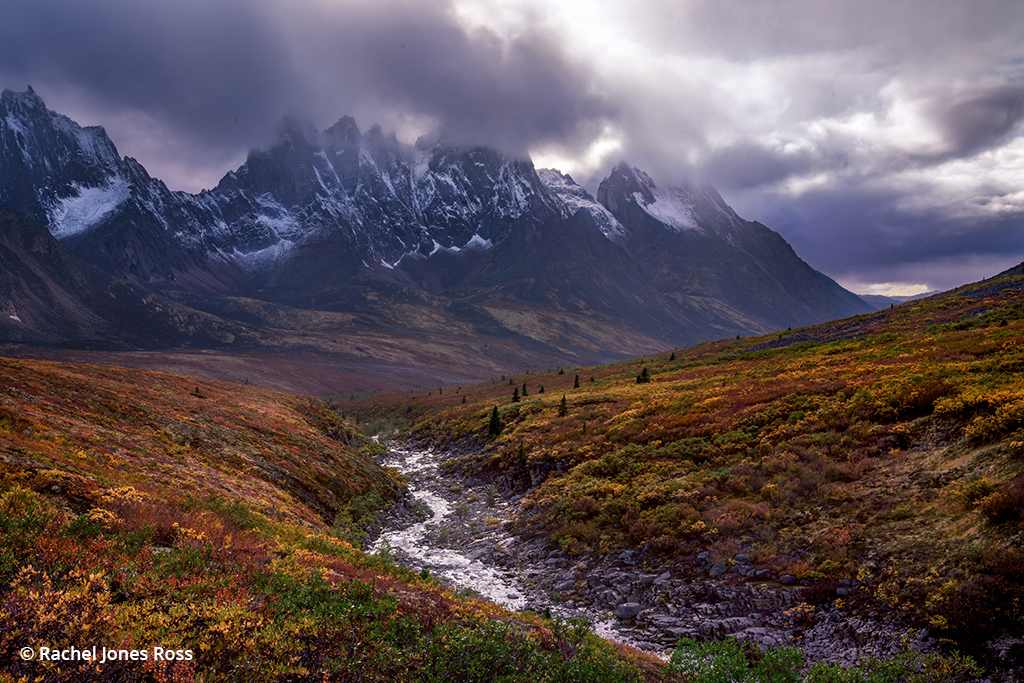
The often-unforgiving autumn weather in the Yukon’s Tombstone Mountain range makes it feel like the last frontier. The dark, brooding clouds in this image give the viewer a sense of what it is like to be in this remote and isolated part of the world.
Dynamic weather can also help create an emotional connection to the image, both for the viewer and the photographer. While I was on a week-long camping trip in the Yukon during the first week of September 2018, the temperatures dropped below freezing at night. That week it snowed most every night. The Yukon autumn felt more like the winter in the Canadian Rockies. One morning, I woke up to frozen hiking boots; I had to chisel away a layer of ice before I could even pry the laces apart. Despite the winter-like conditions, I was completely captivated by the Yukon landscape. The remoteness, rugged peaks, challenging, dramatic weather and relative absence of people made it feel like the last frontier.
During my time in the Yukon, I would have loved nothing more than to see amazing light alongside those beautiful fall colors. However, the images I captured with dark, brooding clouds over the rugged peaks and vibrant tundra encapsulate the feeling of what it was like to be there in this remote part of the world where the weather can be unforgiving.
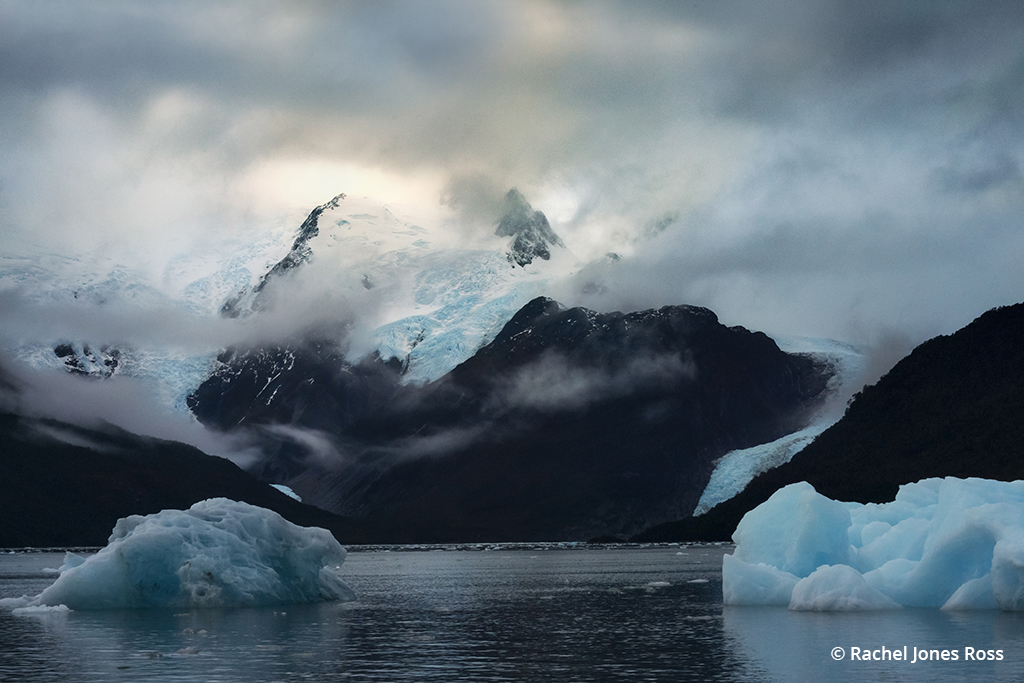
Patagonia meets Antarctica. Somehow, the wet weather here felt colder than a Canadian winter, but when the clouds parted long enough to reveal these unnamed peaks, all I could think about was how soon I could return.
I have also found that I have more emotional connection to my own images when conditions are challenging (this includes being physically difficult or technically difficult to execute the image). For example, during a trip to Patagonia, I experienced every kind of weather, most notably driving rain and heavy winds. Of the twenty-two days I was on my Patagonia trip, it rained on eighteen of them. As the cold rain soaked through my boots and penetrated my bones, I was colder than I had never been in Canada. When the rain finally let up, the moody atmosphere resulted in some memorable moments and photos.
The most memorable day of the expedition came after my biggest struggle with Mother Nature. Our small group of explorers made base camp near the bottom of the glacier before making the trek up the mountain, to the overlook at the top of the glacier. There was no trail, and much of the hike was a bushwhack. One hour into the four-hour trek, I fell ill and hiked the rest of the way wishing I had not left my emergency antibiotics at base camp. It rained until we reached the top, then it snowed. I was exhausted, cold and demoralized.
The next morning, the clouds finally broke through, but I felt too weak to climb any further up the mountain for a sunrise shoot. Matt Lum, my good friend, packed my camera gear and tripod in his bag and said, “You didn’t come all this way and wait so long for good conditions to miss this. You can do it.” With his encouragement, I did. That morning was the only time the clouds would part long enough for us to see these unnamed peaks.
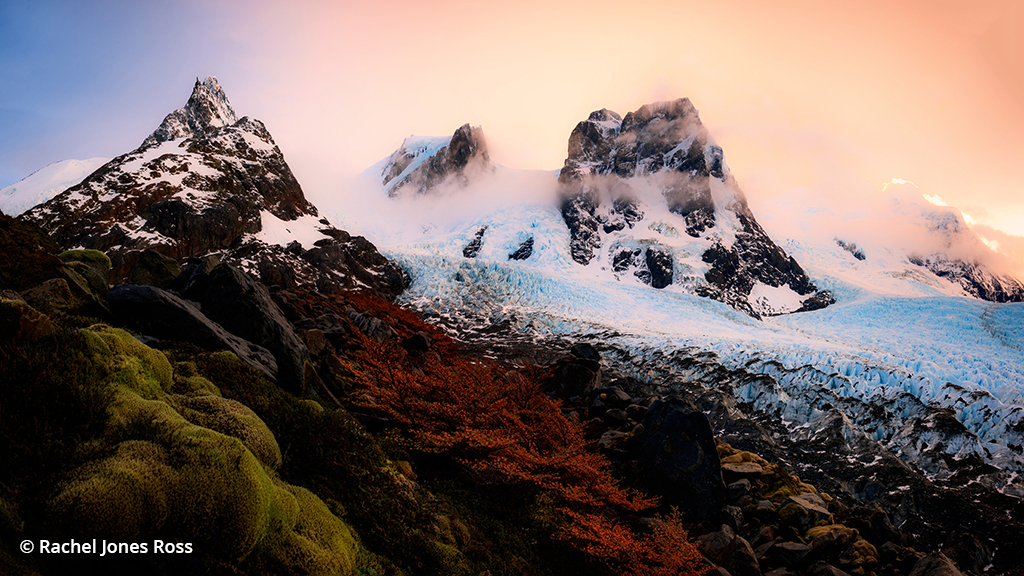
Watching the clouds part over these unnamed peaks after 16 days of rain and cold was one of the most memorable moments I have had in photography. Looking back on this image, I feel a strong emotional connection to that moment of seeing the light breaking through the clouds and feeling the warmth of the sun on my face.
Watching the sun break through the clouds over this remote part of the world was transcendent, something I will never forget. After endless rain, cold and illness, those brief moments of light and atmosphere were even more special. For the first time in weeks, I felt warmth on my skin and a renewed sense of energy. Unfortunately, the light did not last long. I had a few minutes to stitch together a vertical panorama. When I look at this image today, I am filled with that same sense of light and warmth I experienced on the mountain over a year ago. It is not my favorite image compositionally, but I have a strong emotional connection to the moment and the experiences that brought me there.
Once we returned to civilization and made our way to Torres del Paine, the weather was more favorable. The fall colors were pretty, but it was the mood of the place that made me want to return to the region as soon as possible.
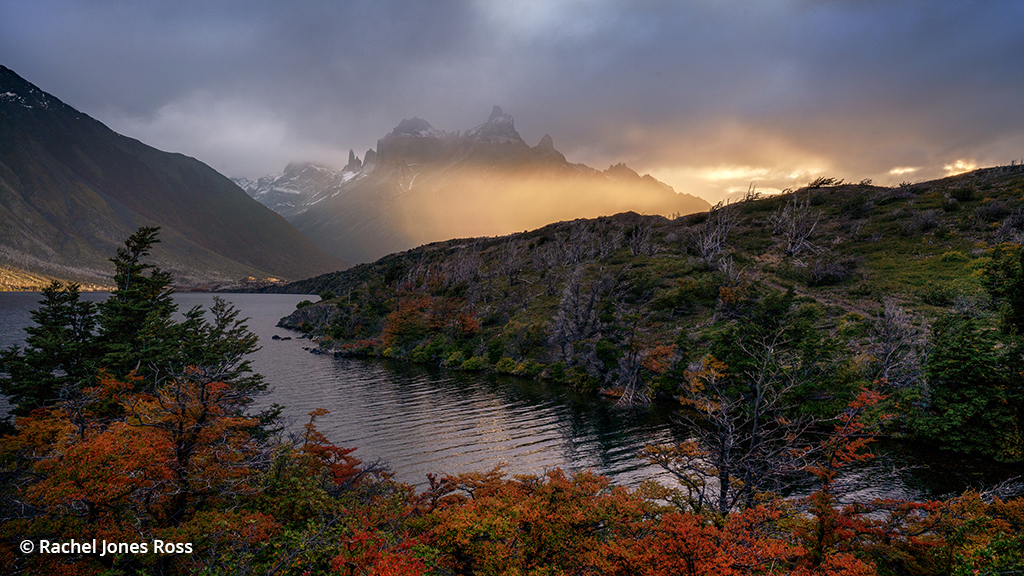
The fall colors were pretty in Torres del Paine National Park, but the ever-changing clouds and atmosphere created the most compelling images.
Atmospheric conditions, like the ones I photographed in Torres del Paine, help to transform a two-dimensional photograph into a three-dimensional view. When looking toward a distant horizon, tiny particles fill the air between our eyes and the distant objects. Light scattering from those particles makes distant objects less luminous and less saturated, which is a cue to our visual system that an object is further away. Foreground objects will have high contrast, whereas background objects will have lower contrast. While it is totally possible to create some of these effects in post-processing, atmospheric conditions produce a natural, three-dimensional quality in an image.
In another favorite image from Torres del Paine, for example, the grass in the foreground is high contrast and saturated. As the eye moves toward the back of the scene, the mist and low cloud desaturate the mountain, and the mountain area is low contrast. Together, these elements help to create a sensation of depth in the image.
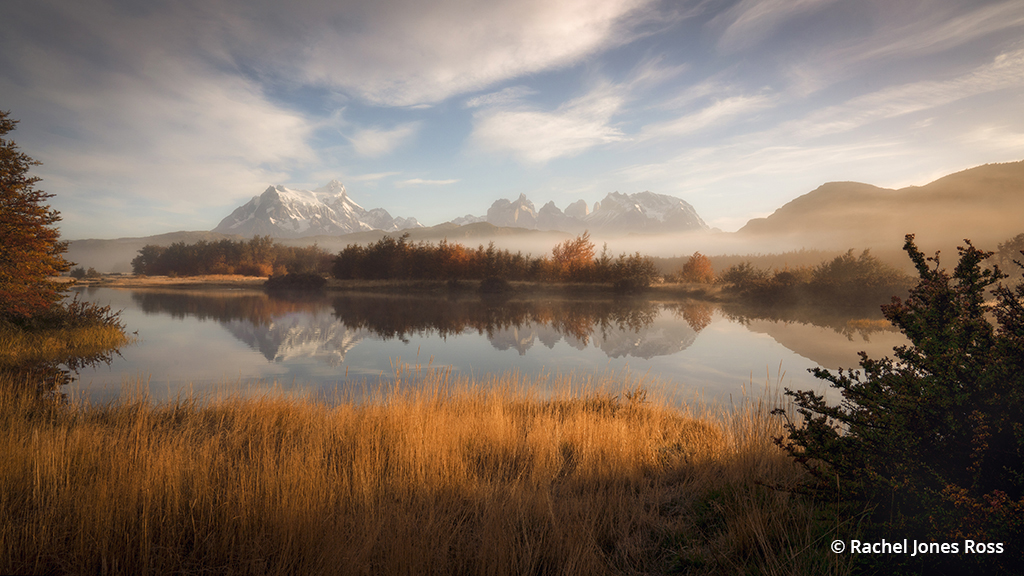
Atmospheric conditions, such as the fog and low clouds in this image of Torres del Paine, help give the viewer a perception of depth.
Finally, stormy, moody weather also lends itself to unique shooting conditions that can change a landscape from one day to the next. The Devil’s Pulpit in Scotland is one of my favorite places to photograph because I see a unique perspective every time I visit. It rains most every day in Scotland but not all day. Consequently, the water levels in that little gorge rise and fall, revealing and concealing the fascinating red rock beneath the surface of the water. When the light hits in just the right way, the vibrant green of the canyon walls reflects in the cola-colored water. For the past five years, I have photographed this location every autumn and have yet to see the same conditions twice!
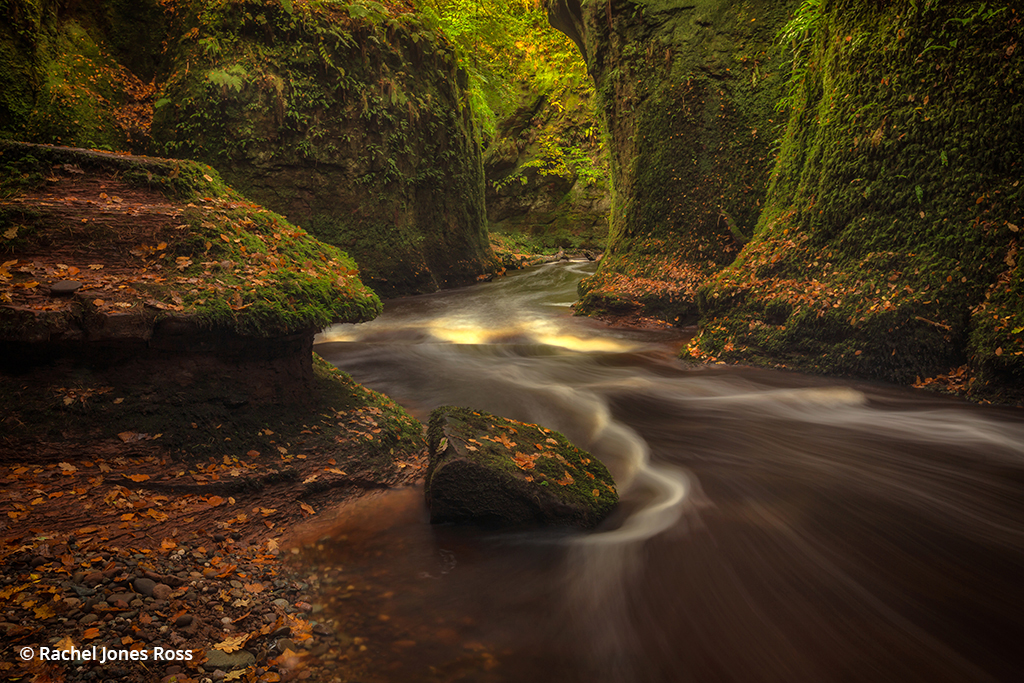
This beautiful little gorge in Scotland reveals something new every time I visit; the changing season brings autumn rains, which reveal and conceal fascinating textures and features of the red rocks beneath the surface of the water.
Looking through my collection of fall images from many different parts of the globe, the best ones were not always the ones with the most vibrant fall colors. Rather, my favorite images are the ones with the most atmospheric conditions. While these conditions can occur at any time throughout the year, it is certainly more common to find them in the fall as the days become shorter, the nights become longer and cold air intersects with the warmer earth. If you are looking for the perfect autumn photo this year but you do not live in an area that typically has vibrant fall colors, keep a close eye on the weather—you might just surprise yourself with what you can capture.
See more of Rachel Jones Ross’ work at astralisphotography.com.
The post Atmospheric Landscapes appeared first on Outdoor Photographer.

